This year Future Trees Trust researchers, Drs Jo Clark and Joe Beesley have revisited some of the estates where tolerant trees were selected in 2017 to check the health status of these trees in situ. Here, they are visiting a site in south Wales where four trees were selected, three of which remain very healthy.
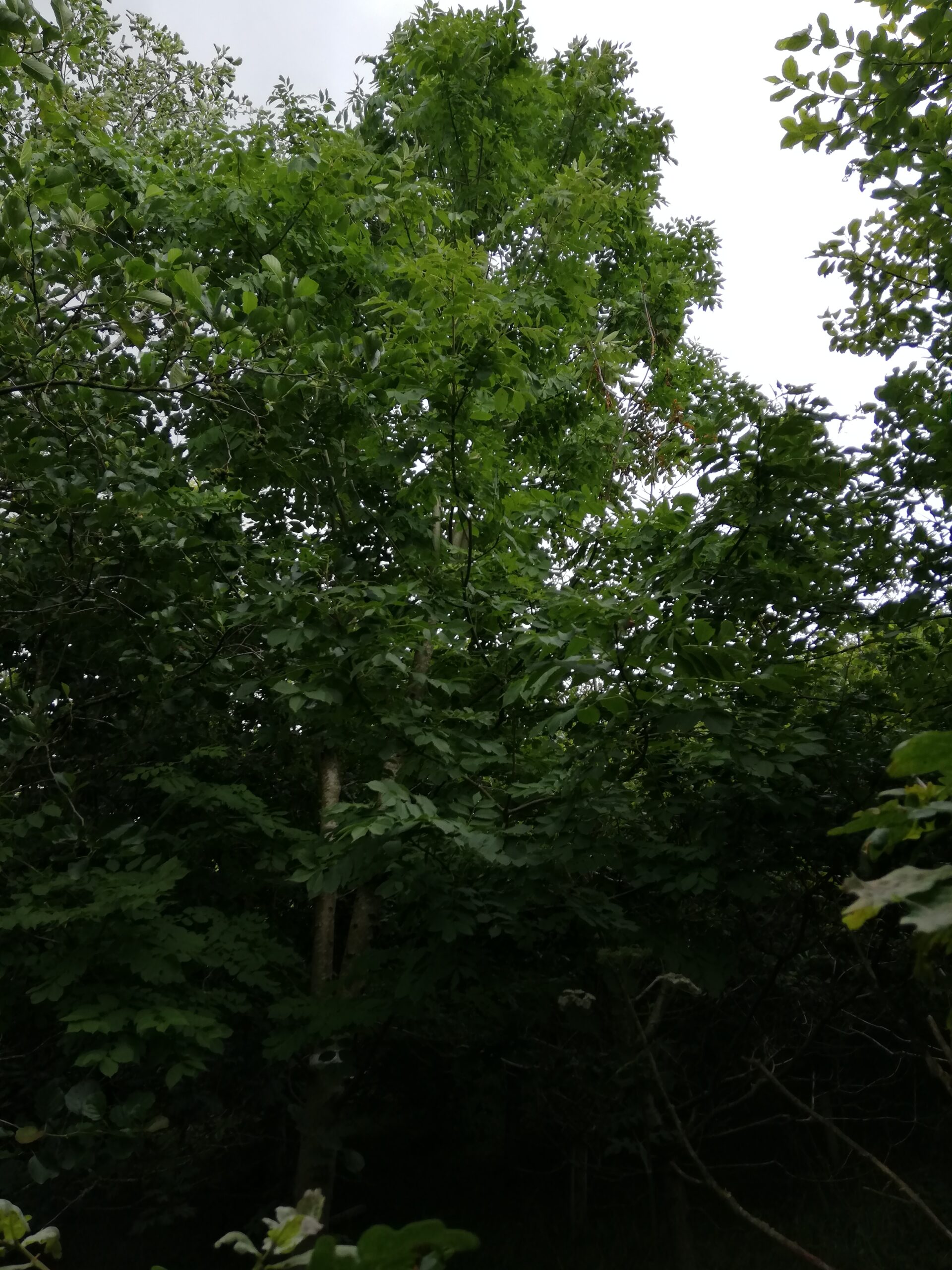
In additional to this, they are also revisiting estates where the original plus trees in FTTs breeding programme were selected in the hope of finding tolerant ash displaying good timber characteristics. At the Preshaw estate in Hampshire, the landowner has extracted over 10,000 tonnes of ash, but importantly, has left a handful of trees that are still really healthy. Here, Jo and Joe are recording details from one of these trees.
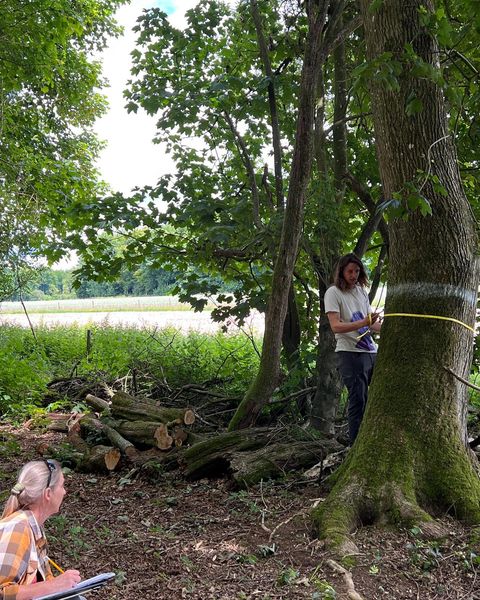
Controlled inoculations – Testing our selections
Were the selections correct?
All selections being made are based on the trees phenotype – a visual assessment of the trees health in-situ. To test the accuracy of this, Forest Research are carrying out controlled inoculations in two ways. Thirty trees selected as tolerant, and another 30 trees known to be susceptible were grafted and the grafts sent to Forest Research for testing. Dr Caroline Gorton, Tree Health Diagnostics at Forest Research inserted dowels of infected wood to the main stem. If the tree was selected as susceptible you would expect a lesion to form as can be seen here. If selected as tolerant, and a lesion forms, well, that means our selection is incorrect. If no lesion forms, it is much more likely that we have selected a truly tolerant tree.
Under natural conditions, spores are released in June / July and hit the leaves and infect the tree that way. So Dr Gorton is also testing our selections by applying a spore suspension to leaves.
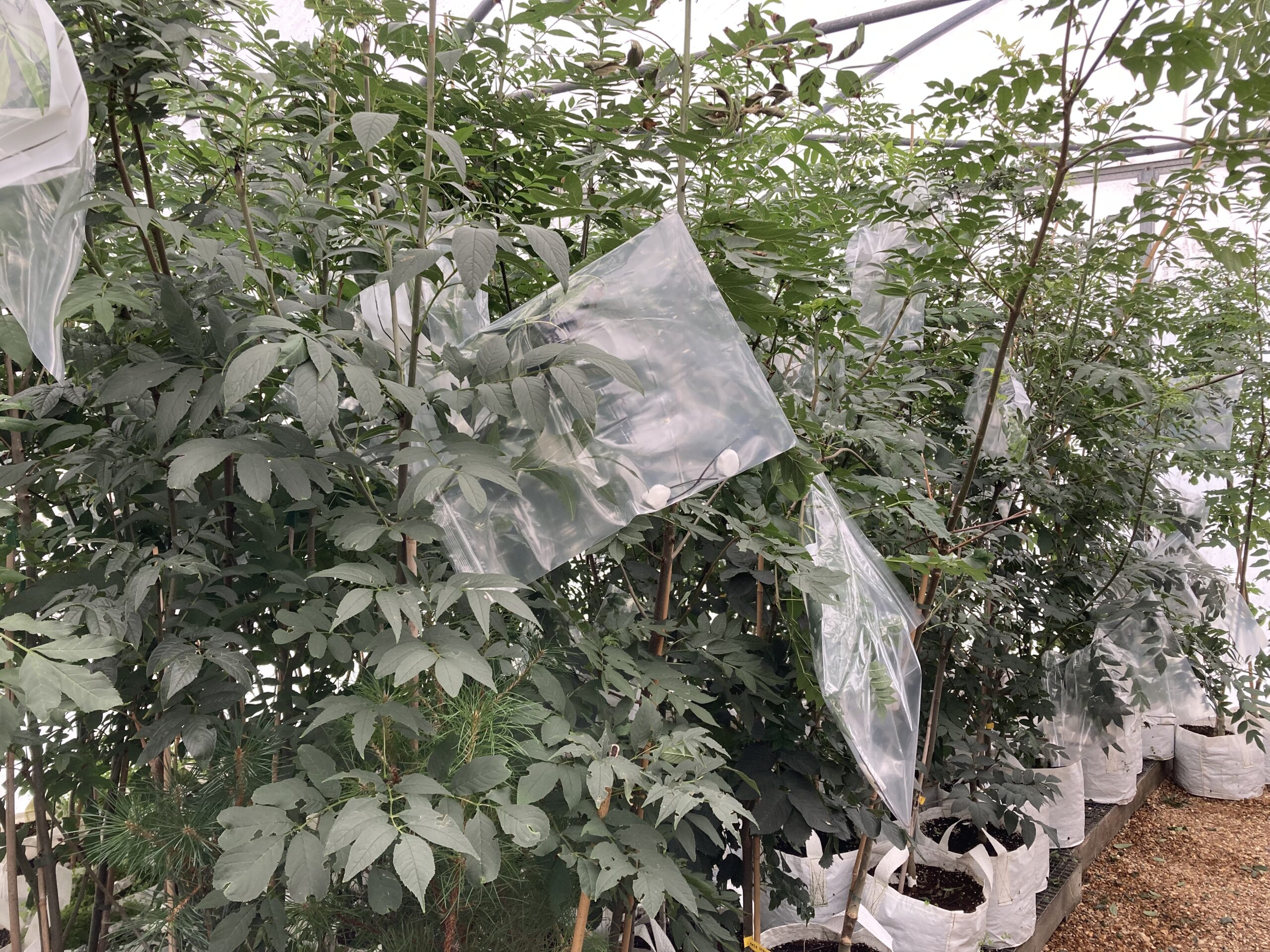
Caroline was able to collect rachides several weeks ago before the hot spell and has recently inoculated the trees that were selected for the leaf inoculation during a period where the heatwave had calmed. The inoculum consists of a large zip lock bag with a damp cotton wool ball and a couple of rachides with apothecia (which contain the spores). By directly infecting grafts of these trees with the fungus responsible for ash dieback, we will see how well our selections fare.
The trees were left to grow in a polytunnel to see how they have coped with these controlled inoculations.

Rachides with apothecia
Caroline has also started examining the woody inoculations to discover very interesting lesions on some of the trees. As expected not all the trees discovered are tolerant to the disease. However, they will continue to be monitored and assessed to find remaining tolerant ash trees that have been exposed to the disease.
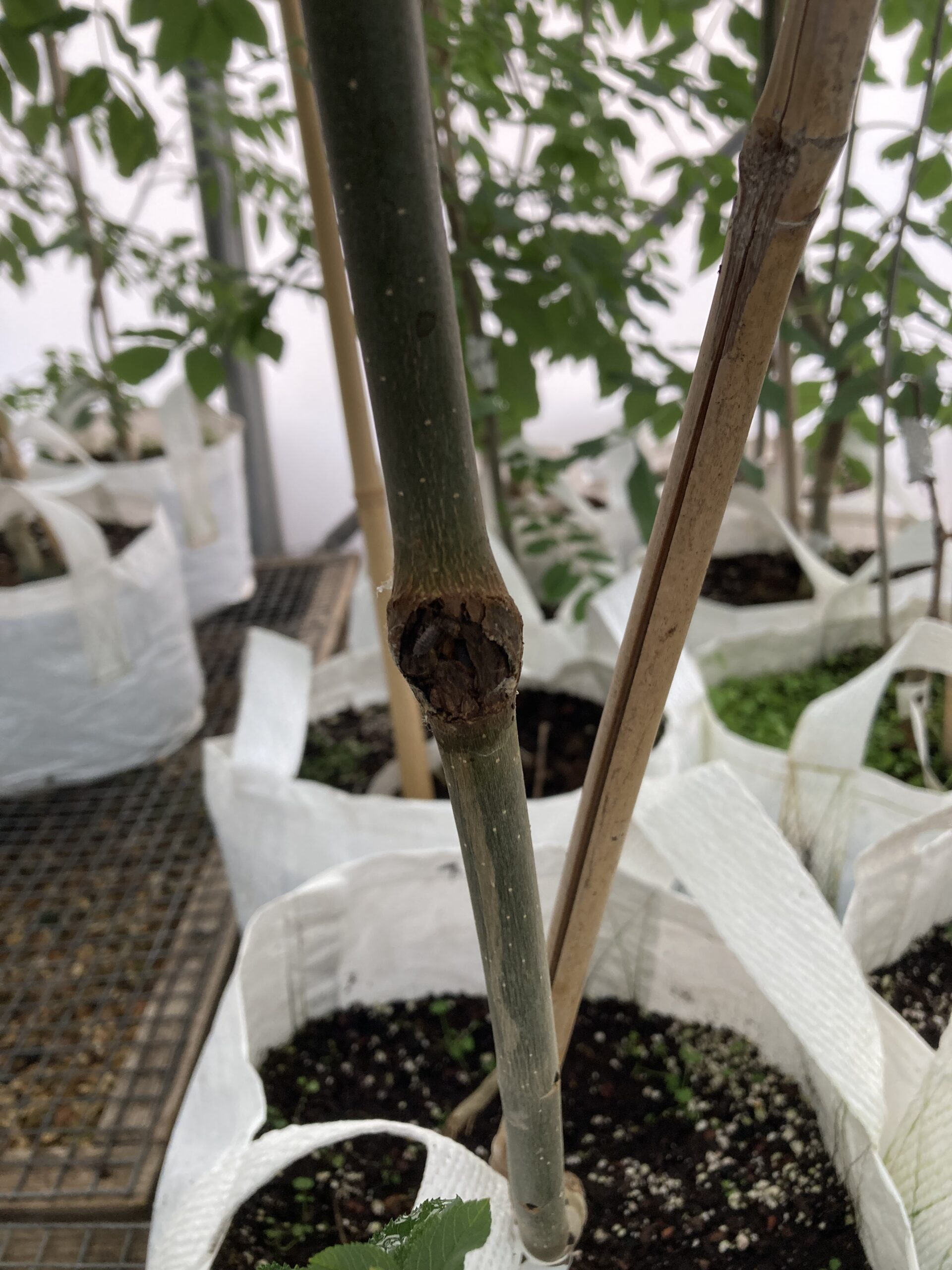
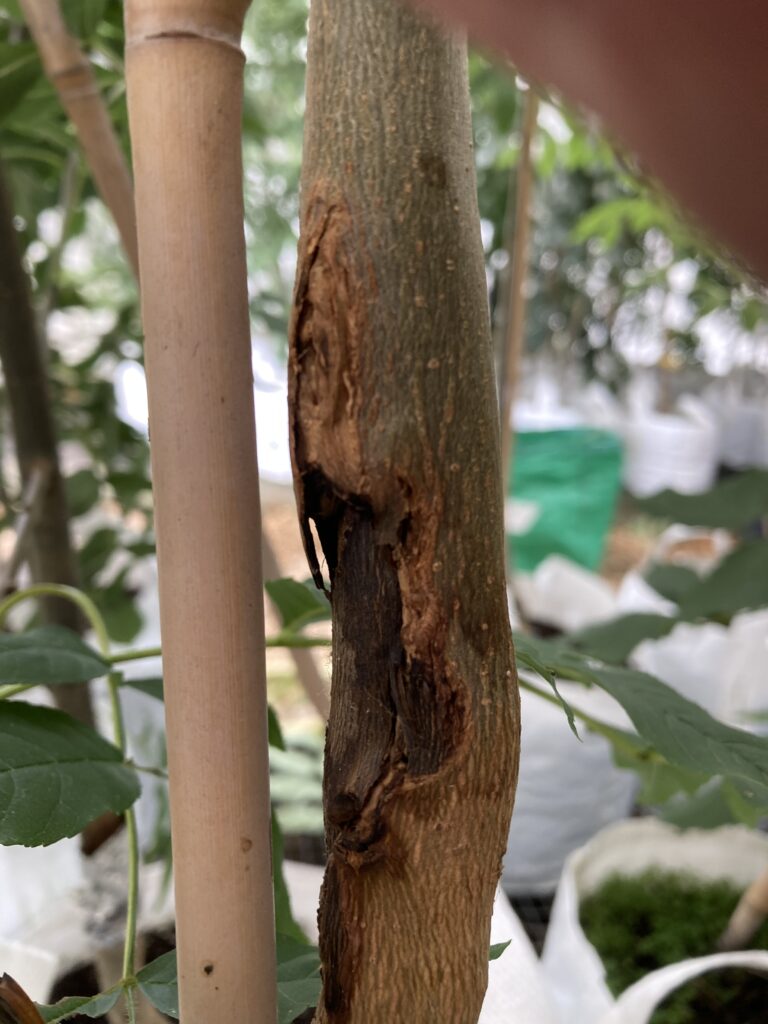
The Living Ash Project – 10 years on (May 2024 update)
An update by Jo Clark, Head of Research at Future Trees Trust The Living [...]
The Living Ash Project: A Decade of Progress in Ash Dieback Tolerance
By Dr Jo Clark, Head of Research, Future Trees Trust Planting Archives [...]

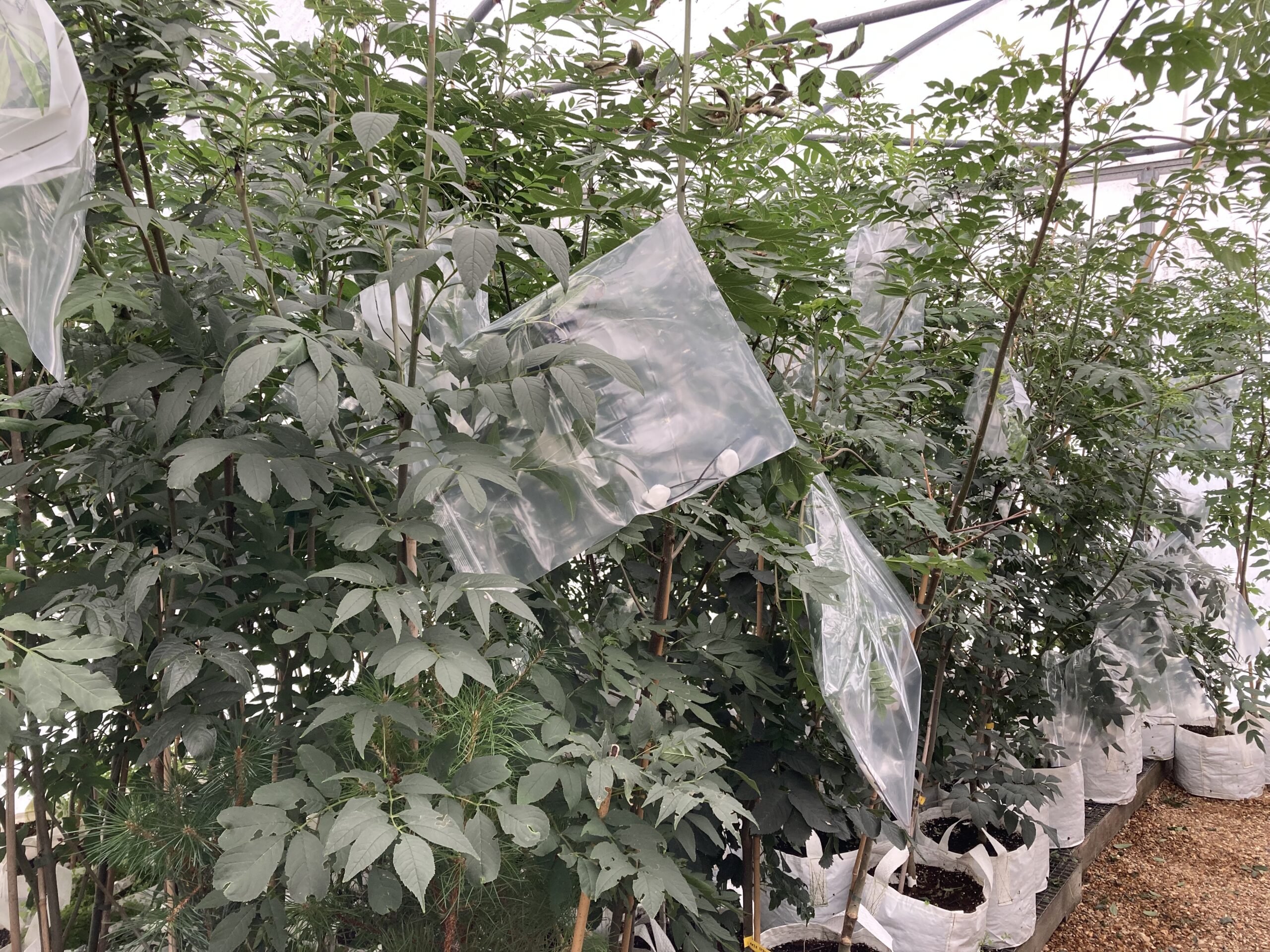
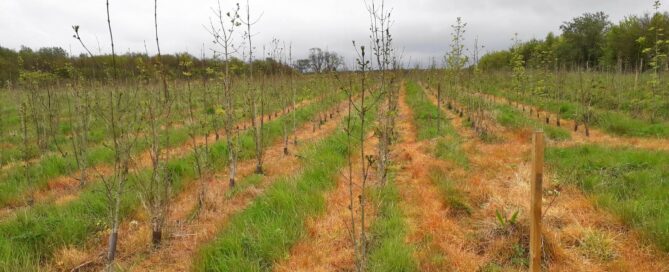

Leave A Comment